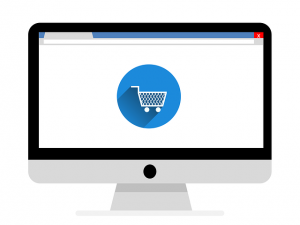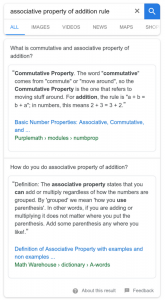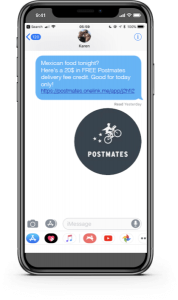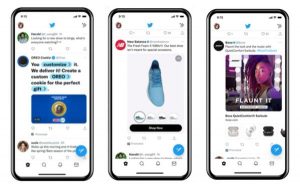In a 2020 report, Marketing Dive noted that influencer marketing was helping brands consistently achieve 500-1800% returns. By any standard, ROI numbers this high are astounding.
But an increasing number of brands trying influencer marketing for the first time are confused about what makes this strategy work (not every brand is achieving these amazing results). The truth is that there is a “secret sauce” to successful brand-influencer partnerships. And this secret has everything to do with the influencers that brands choose to partner with.
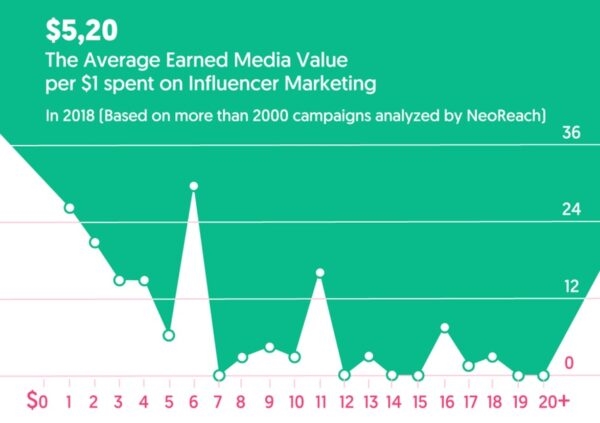
- Source: Influencer Marketing Hub
Not all influencers are equally influential. Furthermore, many influencers are not influencers at all. Fake influencers have infiltrated one of the most lucrative digital and social media marketing strategies of our time.
What experts find is that influencer marketing is more than hiring someone with a lot of followers. Savvy influencer relationship managers get this, but industry novices are less likely to know how to leverage the power of authentic influencers on behalf of their brand.
What are Fake Influencers?
Fake influencers are not real influencers. Rather, they are social media users that want to bypass the hard work it takes to engage a sizable audience, become an expert, and develop the skills necessary to create compelling content.
The hope of most fake influencers is that brands will hire them to promote products without inquiring into that influencer’s authenticity. But the end result is that brands get taken with little more than a pittance of brand awareness and hardly a conversion to show for it. In worse cases, fake influencers ruin brand reputation online.
Buying Fake Followers
In the summer of 2019, CNBC reported that of the $ 8.5 billion invested in influencer marketing, $ 1.3 billion was lost to social media personalities with fake followers.
The trend seemed harmless at first. Aspiring influencers could partner with an “agency” that promised new followers in the tens of thousands. Most serious social media users know that they gain brand recognition with a minimum of 1,000 followers. Agencies claiming the ability to boost followership were attractive to these wanna-be influencers.
But the “agencies” that promise followers are disingenuous. Most choose to employ bots that create fake accounts to follow that social media user, giving the impression that the user is a bonafide influencer.
Buying Fake Engagement
By 2018, most fake followers were easy to spot once brands learned how to measure influencer engagement metrics. Marketers calculate engagement metrics by dividing the sum of likes, comments, and shares by the number of influencer followers.
So fraudulent fake follower providers got smarter. They began selling fake engagement, as well. Not only could aspiring influencers “buy” followers, but they could also buy post likes, comments, and shares. This trend made the fake influencer issue more complex.
What do real influencers look like?
Today, seasoned influencer marketers utilize influencer “deep dives” to ascertain the value of an influencer’s audience and engagement quality. These marketers look for meaningful conversations between the influencer and his/her followers.
Influencers that only ever receive likes or comments with little to no substance are far less likely to be recruited by brands today than they were in 2018/2019.
Influencer marketers, with the help of engagement tracking platforms like GRIN and CreatorIQ, are verifying social influence before joining forces with an influencer. Social media power users that earn connections and respect from members of their audience help brands generate significant returns when that influencer recommends their product or service.
Real Influencers Using Inauthentic Methods
Unfortunately, money from brand sponsorships continues to threaten influencer authenticity, so much so that some marketers discount the influencer approach altogether. Some real influencers have taken steps to venture in gray areas to increase their reach and exposure before brands trying to recruit promising ambassadors.
Among the two most common inauthentic means of building a personal brand on social media are influencer pods and opt-in networks.
Influencer Pods
Influencer pods – most common on Facebook and Instagram – are groups of influencers that assume an “I’ll scratch your back if you scratch mine” relationship. When a member of the group posts, the other members like, comment, and/or share that post to their newsfeed.
This boost in engagement looks better than the fake engagements described above. But the reality is that influencer pods do not accurately reflect an influencer’s social impact online.
“Don’t fall into this trap of working with influencers who are not actually influential but just appear to be from engaging in pods!” – Samantha Wormser, VP of Public Relations at Power Digital Marketing
Some social platforms are cracking down on influencer pods. Experienced influencer recruiters often spot the same clump of influencers engaging one another consistently in quid-pro-quo fashion and steer clear of influencers utilizing pods to promote their personal brand.
Opt-in Networks
Opt-in influencer networks are recruitment agencies that try to match influencers with brands looking to hire influencers. These agencies do not intentionally promote dishonest influencers, such as the ones that purchase followers and engagement. In fact, most do a decent job of screening out influencers with fake followers and engagement.
The goal of this “middleman” approach seeks to streamline the influencer recruitment process. But opt-in networks dilute influencer marketing results. Instead of building consumer and follower trust, influencers joining these networks often focus on making money.
“Unfortunately, many brands today think they can shortcut trust. They pay personalities to promote products they don’t actually use or believe in. The result is influencer marketing that feels fake and inauthentic, breeding distrust (and anger) among consumers.” – GRIN, 2020
Consumers can spot inauthenticity right away. Brands that specifically target influencers who love their products or services don’t have to worry that those influencers will manufacture excitement. Opt-in networks, on the other hand, add murkiness to the brand-influencer partnership by making influencer marketing more about money than about helping followers improve their quality of life.
Conclusion – The Effectiveness of Authentic Influencers
Despite becoming an increasingly crowded space, influencer marketing is breaking sales goals for a large number of brands, particularly DTC brands with an eye for authenticity.
As GRIN states, there’s no “shortcutting trust” with consumers. To make influencer marketing work for your organization, you must identify influencers that earned the confidence of their online communities. Additionally, marketers should identify those factors that make a good influencer match for their organization.
And just as one bad influencer can negatively impact your program ROI, one great influencer can transform your business. The extra effort you put into finding the right influencers is well-worth your time.
Digital & Social Articles on Business 2 Community
(61)

